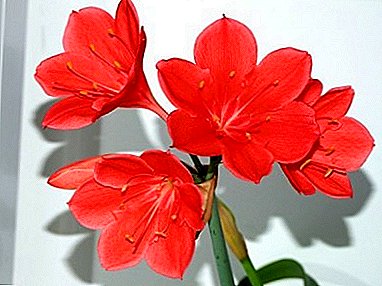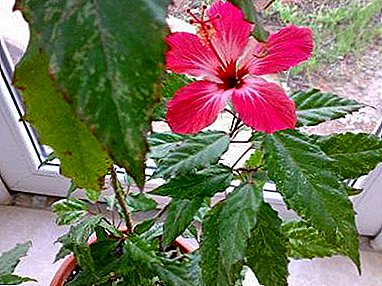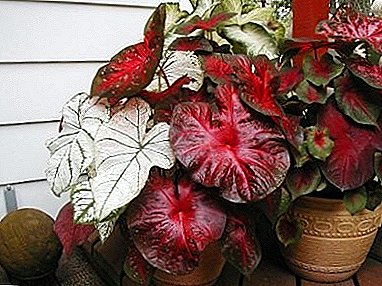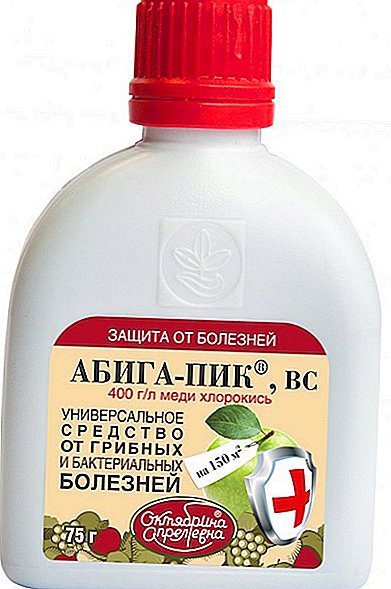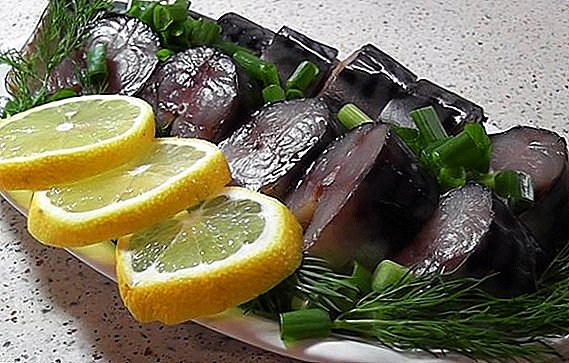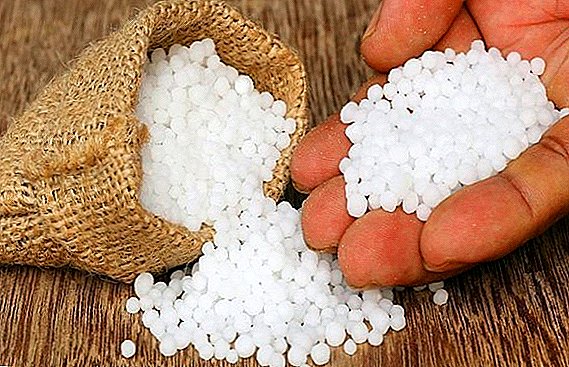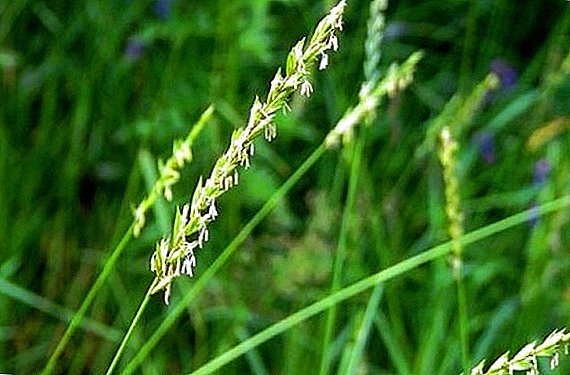 It is difficult to find a place on our planet where wheatgrass does not grow. This poorly exterminated weed is probably hated by all gardeners. People even gave him the name "dog grass" or "worm-grass." Pyraeus is known for its roots, which are quite difficult to pull out, and for its dense thickets. But not everyone knows about the medicinal properties of wheat grass. They are treated with an unimaginably wide range of diseases: arthritis, prostatitis, diathesis, jaundice and many other diseases. It is noteworthy that wheatgrass found itself not only in traditional medicine, but also in modern pharmacology. If you still do not know about the magical properties of the weed, then in this article we will describe in detail about them.
It is difficult to find a place on our planet where wheatgrass does not grow. This poorly exterminated weed is probably hated by all gardeners. People even gave him the name "dog grass" or "worm-grass." Pyraeus is known for its roots, which are quite difficult to pull out, and for its dense thickets. But not everyone knows about the medicinal properties of wheat grass. They are treated with an unimaginably wide range of diseases: arthritis, prostatitis, diathesis, jaundice and many other diseases. It is noteworthy that wheatgrass found itself not only in traditional medicine, but also in modern pharmacology. If you still do not know about the magical properties of the weed, then in this article we will describe in detail about them.
Pyraeus plant description
Pyrei is a perennial wild-growing weed from the family of cereals and at the same time a storehouse of healing properties. It is famous for its long, thin and rather strong rhizome. The roots develop in different directions, which makes the weed incredibly strong. If, when you get rid of the wheatgrass on your plot, you leave a small piece of the root in the ground, then in the near future the plant will fully recover. Wheatgrass roots also have healing properties.  On the surface, wheatgrass is a long, green leaf with a width not more than a centimeter. Wheatgrass height often reaches more than a meter. The plant blooms in mid-summer spikelets, ripening by the end of summer or early autumn. Such a weed is great for feeding livestock. Wheatgrass does not grow only in deserts and dense forest plantations. Favorite places of weed are front gardens, vegetable gardens and fields. Also, the plant can begin its growth on any, even the most barren soils.
On the surface, wheatgrass is a long, green leaf with a width not more than a centimeter. Wheatgrass height often reaches more than a meter. The plant blooms in mid-summer spikelets, ripening by the end of summer or early autumn. Such a weed is great for feeding livestock. Wheatgrass does not grow only in deserts and dense forest plantations. Favorite places of weed are front gardens, vegetable gardens and fields. Also, the plant can begin its growth on any, even the most barren soils.
Did you know? Cats and dogs sometimes love to eat wheat grass. It is great helps clean their body.
Pharmacological properties of the plant
The upper part of wheatgrass is not actually used in medicine. Particularly valuable medicinal properties of wheat grass. It contains a lot of carbohydrates, such as starch, fructose, sugar. The chemical composition of wheatgrass is rich in vitamins B, C, ascorbic acid and essential oil. As the weed grows, one very important mineral for man, silicon, accumulates in its rhizome. Thanks to so many medicinal qualities, wheatgrass is firmly rooted in pharmacology.
 Weed-based medicines are used to achieve a laxative effect when problems are present with the urogenital system. It can also have anti-inflammatory properties and help in expectoration of sputum. Dry milled roots can be purchased absolutely at any pharmacy. Apply a plant for problems with the stomach, skin diseases, and even in violation of the functions of the musculoskeletal system. One of the most popular medicines based on wheatgrass roots is “Uronefron”, which is used to treat cystitis and prostatitis. But with the help of weed pollen create drugs for the treatment and diagnosis of allergic manifestations.
Weed-based medicines are used to achieve a laxative effect when problems are present with the urogenital system. It can also have anti-inflammatory properties and help in expectoration of sputum. Dry milled roots can be purchased absolutely at any pharmacy. Apply a plant for problems with the stomach, skin diseases, and even in violation of the functions of the musculoskeletal system. One of the most popular medicines based on wheatgrass roots is “Uronefron”, which is used to treat cystitis and prostatitis. But with the help of weed pollen create drugs for the treatment and diagnosis of allergic manifestations.
Did you know? Many centuries ago, wheatgrass was called "creeping field fire."
Magic Grass Recipes
Medicinal properties of wheatgrass roots are very popular. He took pride of place in traditional medicine. We give several examples of the use of wheatgrass.
For skin infections, a decoction of weed rhizomes can be applied. It is necessary to take about 20 grams of dry chopped root, pour a glass of water and put on a slow fire. Boil up to 12 minutes with a lid covered. After that, the resulting broth is filtered and cooled. Take a tablespoon after a meal for one month.
 In hemorrhoids and diseases of the colon, you can also use a decoction of the roots. To do this, pour two spoons of dry mixture with 200 ml of water and simmer for no more than 10 minutes. Strained and cooled broth used as enemas. And for greater effect, you can apply half a cup inside before eating.
In hemorrhoids and diseases of the colon, you can also use a decoction of the roots. To do this, pour two spoons of dry mixture with 200 ml of water and simmer for no more than 10 minutes. Strained and cooled broth used as enemas. And for greater effect, you can apply half a cup inside before eating.
Recently, the medicinal properties of the rhizome of wheat grass are actively used to prevent the treatment of infertility, both male and female. In the male version, take two tablespoons of shredded roots and pour 0.5 liters of water. Boil over low heat until reduced by a third. After you have filtered, you can eat half a glass several times a day, regardless of the meal.
When female infertility, one spoonful of roots pour a glass of boiling water. Insist about an hour, after which you can strain. Take this healing infusion of a teaspoon several times a day.
The medicinal properties of the wheatgrass rhizome are used even for the prophylactic treatment of tuberculosis. To prepare a magical tincture, take two tablespoons of dry preparation, cover with one glass of milk and, stirring, boil on low heat for about five minutes. Then strain and cool at room temperature. Take recommend the entire broth at a time. Drink this broth three times a day.
 Not only the roots are used in traditional medicine, but also a medicinal drug can be obtained from the grass of wheatgrass. To obtain useful juice from wheat grass, the stems and leaves are very well washed in cool water, after which they are blanched and passed through a meat grinder or blender. After that, the squeezed juice is squeezed out and mixed with warm boiled water in the same proportions. The resulting juice is slightly boiled and can be taken half a cup before a meal. You can use such a decoction during diathesis and jaundice. The obtained wheat grass juice retains its medicinal properties for two days.
Not only the roots are used in traditional medicine, but also a medicinal drug can be obtained from the grass of wheatgrass. To obtain useful juice from wheat grass, the stems and leaves are very well washed in cool water, after which they are blanched and passed through a meat grinder or blender. After that, the squeezed juice is squeezed out and mixed with warm boiled water in the same proportions. The resulting juice is slightly boiled and can be taken half a cup before a meal. You can use such a decoction during diathesis and jaundice. The obtained wheat grass juice retains its medicinal properties for two days.
Important! Wheat grass juice is best harvested in the fall.
Contraindications
 If wheat grass contains medicinal properties, then, in theory, it should have contraindications. But at the moment no negative aspects of its use have been identified. He can only bring harm to the fields and gardens. Despite its beneficial properties, for most gardeners it only brings inconvenience and long time on the site. But do not forget that all healthy herbs should be taken in moderation, and wheat grass is no exception.
If wheat grass contains medicinal properties, then, in theory, it should have contraindications. But at the moment no negative aspects of its use have been identified. He can only bring harm to the fields and gardens. Despite its beneficial properties, for most gardeners it only brings inconvenience and long time on the site. But do not forget that all healthy herbs should be taken in moderation, and wheat grass is no exception.
Did you know? Wheat grass root is sometimes even used for radiation sickness.


